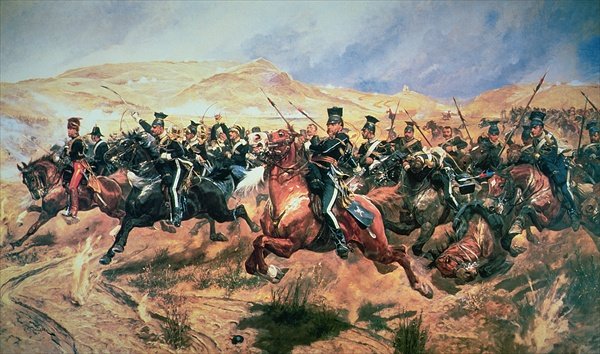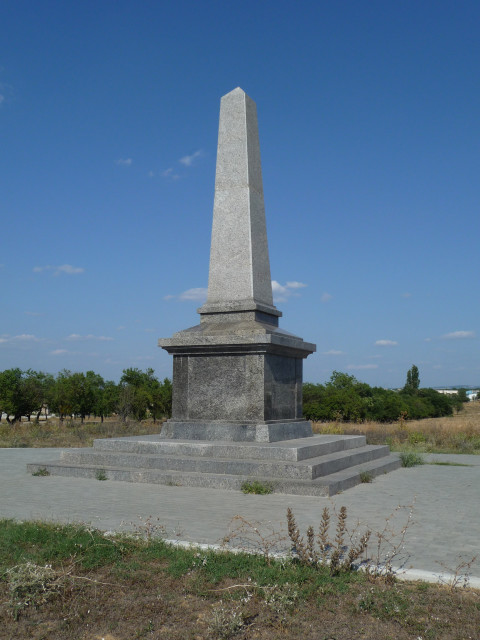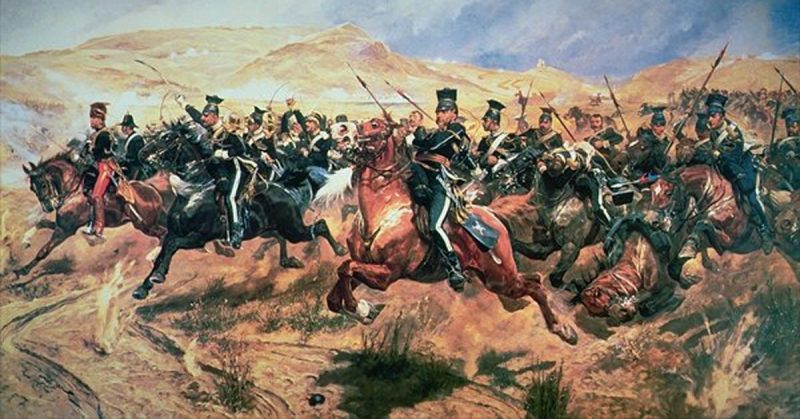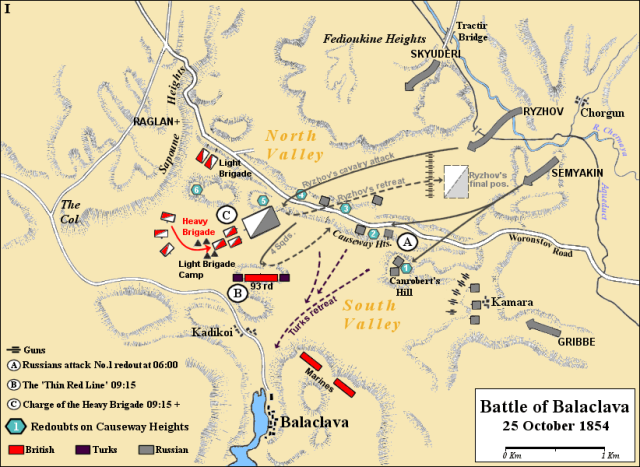Storm’d at with shot and shell,
Boldly they rode and well,
Into the jaws of Death,
Into the mouth of Hell
Rode the six hundred
– From The Charge of the Light Brigade by Alfred, Lord Tennyson
The Charge of the Light Brigade, a disastrous and futile cavalry charge of the Crimean War, is the most famous military disaster in British history. Generations of British children have learned about a charge which would more reasonably only be remembered only by academics and historians.
So what happened in that charge? And why did it become so famous?
The Battle of Balaclava
Lasting from October 1854 to September 1855, the Siege of Sevastopol was one of the most bloody and significant encounters of the Crimean War. As the British and their allies closed in on the city, British forces under Lord Raglan took up defensive positions in the east of the allied lines, above the small harbor of Balaclava.
On 25 October 1854, Russian General Liprandi launched an attack against allied forces in the sector, aiming to seize their positions and start driving back the allies. This was the Battle of Balaclava.
Muddled Information
At first, the Russian attack was successful. Catching the allies by surprise and ill-prepared, they overran Turkish positions and launched a large cavalry charge.
The infantry of the Scottish Highlanders now engaged in a series of heroic actions, driving off the Russian charge. Their steadfastness in the face of an intimidating threat had halted a Russian advance while the 800 cavalry of the Heavy Brigade routed 3,000 Russians elsewhere on the battlefield.
This could have been the moment of allied triumph if Lord Cardigan, commanding the Light Brigade of British cavalry, had taken the opportunity to pursue the fleeing enemy. But he did not.
As the Russians took the opportunity to retrieve artillery they would otherwise lose, Lord Raglan sent frantic messages to Lord Lucan, commander of the cavalry, telling him to attack. Unfortunately, the rugged terrain meant that the two men could not see the same things as each other. Raglan’s vaguely worded orders added to the confusion, leaving Lucan unclear on the objective.
Finally, Raglan sent the hot-headed Captain Nolan of the 15th Hussars with written orders telling Lucan to advance rapidly and prevent the enemy taking away the guns. An angry exchange followed between Nolan and Lucan, who could not see the guns he was meant to seize. But orders were orders, and finally, Lucan ordered Cardigan, his brother-in-law, and another headstrong cavalry officer, to launch the Light Brigade down the valley, despite a lack of adequate support.
As Cardigan led his troops on what he knew to be a suicidal charge, Nolan joined him.
The Charge of the Light Brigade
Imagine what followed from the point of view of a rider in the Light Brigade.
As you gallop down the valley the Russians begin firing down at you from the hills above. Then artillery guns, the target of your charge, open up ahead of you, thirty cannons bombarding you with shot and shell. There’s no way to avoid them, no way to strike back until you reach the end of the valley.
Everything is noise and chaos – the thundering of hooves, the roar of guns, the explosion of shells. Captain Nolan, a rider renowned throughout the cavalry, is the first to fall, his chest torn open by shrapnel. He’s far from the last. This is a death trap. Men and horses are dropping all around you. But orders, momentum, and courage keep you going.

At last, you reach the cannons. Those gunners you don’t hack down try to flee, though there are few places to run in this steep-sided valley, no way out but ahead.
The end of the valley is in sight, but there is no way out – only the massed forces of the Russian cavalry. You’ve done your best against the guns, but now comes the retreat, galloping back along the same death trap down which you charged moments before, as the Russians continue firing at you from the hills.
At last, you return to the safety of the British lines. The whole engagement has lasted only twenty terrifying, blood-soaked minutes. Of 673 men who galloped down the valley, 113 are dead and 134 wounded. Many of the surviving horses are injured and will have to be destroyed. And the guns…
Those precious guns are still back in the Russian lines.
Defeated by Their Own Charge
The Charge of the Light Brigade wasn’t just a disaster in its own right – it marked the final turning point of the Battle of Balaclava. The shattering destruction of the Light Brigade, and their failure to drive back the Russians broke the nerve of the allies. Raglan could not risk his infantry in an attack on the Russians on the heights. He pulled back, losing the outer ring of allied defenses.
For the Russians, Balaclava was a morale-boosting victory. Yet it is in Britain that the ill-fated charge became a legend.
Why?
How the Light Brigade Became Famous

The first step in the birth of a legend was W. H. Russell’s description of the charge, which he wrote for The Times. Embellishing the heroism of the incident, this account took the British public by storm, especially given the contrast it provided between the heroism of the soldiers and the failures of their commanders.
Inspired by the newspaper report, Alfred Tennyson quickly wrote his poem The Charge of the Light Brigade. Taking its rhythm from a patriotic Elizabethan poem, it was a stirring piece that caught many people’s imaginations.
First published in the Examiner on 9 December that year, it became hugely popular not just among the people at home, but among British soldiers serving in the Crimea. It was reprinted countless times, and became a staple of British schoolrooms for generations, emblazoning the image of the Light Brigade across the consciousness of a nation.
And so, from disaster, a legend was born.
Sources:
- Peter Burroughs (1994), ‘An Unreformed Army? 1815-1868’, in David Chandler and Ian Beckett (eds), The Oxford History of the British Army.
- Geoffrey Regan (1991), The Guinness Book of Military Blunders.

